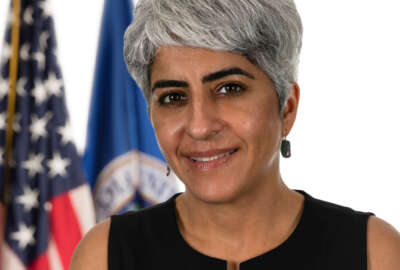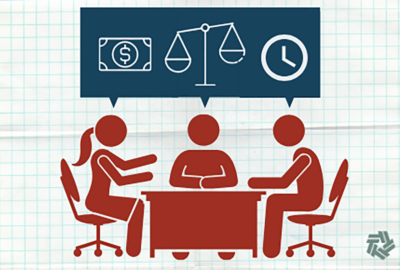OPM’s new employee wellness guidance focuses on being proactive
OPM is calling on agencies to revamp their EAPs and start including even more resources for feds, aiming to support the mental, emotional and physical aspects of an...
The Office of Personnel Management is asking agency leaders to take it up a notch to support federal employees’ mental health and wellness.
Every agency’s Employee Assistance Program (EAP) has a set of traditional offerings to help feds through personal and work-related issues — including mental health counseling, substance abuse treatment and financial and legal services. EAPs are voluntary programs that feds can opt into, when or if they’re looking for those services.
But now OPM is calling on agencies to revamp their EAPs and start including even more resources for feds, to create what the agency called Employee Wellness Programs (EWPs). New employee wellness guidance, which the agency published in May, expands on OPM’s EAP revitalization efforts.
Although OPM oversees the wellness programs governmentwide, each agency runs its own wellness program for internal employees.
“We noticed that some agencies are being leaders in this area and have adapted new programs that are creating a more comprehensive approach, which is what OPM is seeking to do with this guidance,” Jorday Taswell, a personnel research psychologist at OPM, said in an interview with Federal News Network. “We want to look at the mental, emotional and physical aspects of an employee’s health and wellness to really provide them with the most comprehensive arena of supports that are available.”
To design the new guidance and program, OPM considered what agencies that had successful programs were doing, then tried to replicate those strategies more broadly. OPM took examples from agencies that were adding more wellness services, beyond the scope of the traditional EAP model.
Some agencies, especially those already focused on health and wellness as part of their mission, such as the National Institutes of Health, offer even more services to their employees about specific challenges — relocation stress, peer-supervisor relations and work-life balance, just to name a few.
“They are trying to create a workplace culture that really values employee wellness and well-being,” Taswell said. “By speaking with their coordinators, we were able to highlight a couple of key components that we could adapt in this guidance to really make it comprehensive guidance for all federal employees.”
Following a series of focus groups and meetings with agency EAP coordinators, OPM developed its new guidance and program, building off of those additional services, to include more health and wellness options. For example, beyond the required options in the program, OPM said agencies should consider adding more resources wherever possible, including fitness classes, phone apps for wellness, health and wellness seminars, suicide prevention trainings and peer support programs.
Along with encouraging agencies to make more wellness resources available, one challenge is making sure employees know the resources are out there in the first place. Improving awareness, Taswell said, comes down to the work of agency managers and supervisors.
“Agency leaders are gifted with a unique opportunity to inspire inclusive work cultures, which prioritize employee wellness, and can really help set the standard for creating and maintaining an environment that normalizes conversations surrounding topics that may have historically had a bit of a negative stigma attached to them, such as mental health and mental health treatment,” Taswell said.
And beyond the actual services of the program, OPM said agencies should also focus on reducing negative stigmas around traditional EAPs.
“A lot of people tend to have an outdated understanding of EAPs, since they did traditionally originate as substance use treatment services with mental health counseling,” Taswell said. “However, today, they’ve really grown and evolved to encompass many more services and resources and sometimes employees are just not aware of these tools that are available to them.”
Again, much of the work to dispel myths about EAPs comes from the role of agency leaders. Many areas of the program, such as mental health wellness, have a traditionally negative stigma, so it’s up to agency leaders to set the stage, encourage a positive workplace culture and suggest employees take advantage of the resources when or if they need them.
The broadened EAP options OPM is pushing in its new guidance stem from a goal of the President’s Management Agenda, which includes the plan that “agencies will promote awareness of employee well-being and support initiatives that extend beyond the workplace.”
And it’s not just about mental health wellness — there’s a ripple effect, too. At the end of the day, employees with better mental health and wellness often feel more engaged and productive in their work, Taswell said.
“These employee wellness services can really help an employee to hone in on those areas and provide them with additional support, which can in turn lead to greater productivity, and help agency employees meet the mission of their agency,” Taswell said. “We encourage our agency leaders to promote these resources on a proactive rather than a reactive basis, so that employees can maintain their mental health on a consistent basis.”
Copyright © 2025 Federal News Network. All rights reserved. This website is not intended for users located within the European Economic Area.
Drew Friedman is a workforce, pay and benefits reporter for Federal News Network.
Follow @dfriedmanWFED






